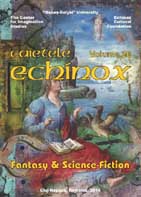Relating Romantic Monsters to Dystopian Robots. Mary Shelley’s Frankenstein and Carel Čapek’s Rossum’s Universal Robots
Relating Romantic Monsters to Dystopian Robots. Mary Shelley’s Frankenstein and Carel Čapek’s Rossum’s Universal Robots
Author(s): Niculae Liviu GheranSubject(s): Literary Texts
Published by: Universitatea Babeş-Bolyai
Keywords: Mary Shelley; Carel Čapek; Dystopia; Monster; Robot; Gender.
Summary/Abstract: The following paper is a study case showing the way in which the debate and attitudes on creating artificial life were shaped by Mary Shelley’s ‘Frankenstein’ and how this debate was inherited by dystopian author Carel Capek in ‘Rossum’s Universal Robots’. Paralels are made at the level of simbolic topography, classic scientific discourse, its relationship with gender constructs and the growing field of disability studies. Capek’s thesis seems to be more complex than many have assumed. Rather than simply offering a radical critique of man’s endeavour to create artificial life, the author seems to favour mimesis rather than the scientific attempt at improving nature itself.
Journal: Caietele Echinox
- Issue Year: 2014
- Issue No: 26
- Page Range: 251-261
- Page Count: 11
- Language: English
- Content File-PDF

